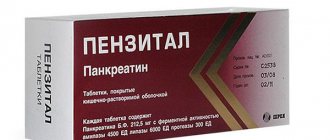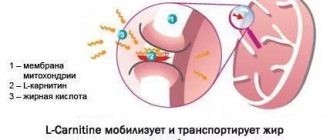Tetanus is a serious disease caused by a bacterial toxin that attacks the nervous system and leads to painful muscle contractions, especially in the jaw and neck muscles. Tetanus can interfere with the ability to breathe and can be life-threatening. The main habitat of dangerous bacteria is soil, saliva and animal feces.
The daily life of children and adults is impossible without injuries that affect the integrity of the skin and mucous membranes. And if the wound is contaminated with soil elements in the absence of immunity to tetanus, this can cause an infection to develop. The tetanus vaccine is the only protection against this disease. In order for the human body to develop immunity to the disease, it is necessary to administer special vaccines containing neurotoxin and tetanus toxoid. When children receive a tetanus shot, these substances are released into the bloodstream, activating the immune system and producing protective antibodies.
Where can I get a tetanus shot? The RebenOK clinic in Moscow vaccinates the population in accordance with established standards and deadlines. You must first make an appointment with a pediatrician to rule out possible contraindications.
Why is tetanus dangerous?
Once tetanus toxin binds to nerve endings, it cannot be removed. To fully recover from a tetanus infection, new nerve endings must develop, which may take several months.
Consequences of tetanus infection:
· Fractures. The severity of muscle spasms can lead to fractures of the spine and other bones.
· Development of pulmonary embolism. A displaced clot may block the main artery of the lung or some of its branches.
· Death. Severe muscle spasms caused by tetanus can cause respiratory failure, which is the most common cause of death.
To prevent a sad outcome, it is recommended to vaccinate your child against tetanus on time.
Signs of tetanus
Signs of tetanus that you should pay attention to and go to the hospital immediately include:
- facial muscle spasms;
- "sardonic smile";
- spasms of the muscles of the back and abdomen;
- labored breathing;
- temperature increase;
- increased excitability and insomnia;
- increased sweating;
- asphyxia and apnea;
- impaired renal and urethral function;
- cramps with pain throughout the body.
Tonic and clonic convulsions replace each other and cause severe pain in the patient. The slightest creaking or other loud sound, jolts and even touches cause irritation in the patient and, as a result, another attack of convulsions. Due to severe spasms and contractions of the muscles of the limbs, bone fractures, damage to the diaphragm and respiratory muscles can occur, which causes asphyxia and death from suffocation. Congestion due to poor circulation can affect the subsequent development of pneumonia.
Body temperature directly depends on the strength of convulsive attacks; with frequent and severe convulsions, it can rise to 42ºC. The heart rate increases to 120 beats per minute. Heart sounds are distinct and loud. When blood pressure drops, the prognosis can no longer be reassuring. The removal of waste products becomes more difficult against the background of spasms of the perineal muscles.
Despite the worsening symptoms of tetanus, the person remains conscious and clearly understands the situation throughout the entire course of the disease. No specific changes in internal organs are observed
Types of vaccines
The tetanus vaccine is an inactivated vaccine (not live) and contains a toxin produced by the bacterium but has no toxicity (toxoid). Once injected, it cannot cause disease, but retains its ability to stimulate the production of antibodies. The tetanus vaccine is always part of a combination vaccine that includes other components.
Where do you get the tetanus shot? It all depends on the drug. The vaccine is administered intramuscularly into the subscapular region, thigh or shoulder.
Types of tetanus vaccines at the RebenOK clinic:
· "Adasel". The vaccine is intended for patients 4-64 years of age. Efficacy and safety have been confirmed. Revaccination is carried out once in a dose of 0.5 ml. The vaccine is injected into the deltoid muscle of the shoulder intramuscularly.
· "ADS-M". Used for children aged 6 years and adults. Introduced every 10 years. It is prescribed mainly if other drugs need to be replaced due to complications. Forms strong immunity. Requires revaccination every 10 years. The graft is introduced under the shoulder blade or into the anterior outer part of the thigh.
· "DTP". Adsorbed drug for tetanus, diphtheria and whooping cough. It is carried out for children from 3 months of age to 4 years. Vaccination consists of three injections with an interval of 45 days, followed by revaccination one year after the third vaccination. Good protection is guaranteed if revaccination recommendations are followed.
· "Pentaxim". Vaccination against tetanus, diphtheria, whooping cough, polio and infection caused by Haemophilus influenzae. Forms stable immunity throughout life. The vaccine is given to children from 3 months of age.
· "Infanrix Hexa" (Belgium). A combined drug for tetanus, hepatitis B, diphtheria, Haemophilus influenzae, whooping cough and polio.
The choice of drug remains with the doctor. The pediatrician must first study the child’s medical history and select the most appropriate vaccine, taking into account individual characteristics.
What vaccinations are given under the shoulder blade?
Inflammation under the scapula is rare.
The method of administration of vaccines that are placed under the scapula is intradermal. The drug is located inside the layers of the skin and is absorbed into the blood within several days. This is necessary so that the body does not immediately receive a large dose of a live vaccine or its toxin, and the immune reaction process occurs gradually.
The injection site was also not chosen by chance - under the shoulder blade there is a very thin layer of subcutaneous fat, i.e. the rate at which the vaccine enters the blood will be approximately the same in people of different ages and sizes, and the likelihood of an abscess at the injection site will be minimal. For medical reasons, injections under the shoulder blade can be replaced by injections into the shoulder or thigh.
Vaccinations given intradermally:
- DTP (whooping cough, diphtheria, tetanus);
- CCP (measles, rubella, mumps);
- Flu;
- Hepatitis B;
- Tick-borne encephalitis.
Most of them are mandatory for children. For students and adults, this is also mandatory at the expense of the employer.
If desired, only vaccination against encephalitis is given - it is necessary only for those who regularly visit nature; homebodies can easily do without it.
Contraindications
Tetanus vaccination for children has low reactogenicity, so there are practically no restrictions on the composition. The main contraindication is the occurrence of allergic reactions or neurological damage after the previous injection.
Temporary contraindications for tetanus vaccination:
· influenza and acute respiratory infections;
· diathesis, eczema and other skin manifestations;
allergic reactions and immunodeficiency;
· increase in body temperature.
In these cases, vaccination is carried out after complete recovery. A preliminary consultation with a pediatrician is mandatory.
Emergency prophylaxis of tetanus
Emergency preventive measures against tetanus infection are carried out when:
- injuries resulting in an open wound;
- tissue necrosis;
- damage to the gastrointestinal tract, resulting in open wounds;
- burns, frostbite 2-4 degrees;
- animal bites.
In such situations, the risk of infection is highest, so the vaccine is administered along with wound treatment. The earlier immunoprophylaxis is done, the higher the chances of avoiding infection. You can start 20 days after receiving a serious injury.
For emergency preventive vaccination against tetanus for children who are vaccinated in accordance with the National Calendar, it is enough to administer 0.5 ml of “AS-anatoxin”. If the child has not previously been vaccinated against tetanus infection, active-passive immunization is necessary. In this case, 1 ml of tetanus toxoid is combined with 3000 IU of anti-tetanus serum. After this, vaccination with toxoid is carried out according to the standard procedure.
Advantages and disadvantages
The clinical effectiveness of tetanus toxoid is estimated at 100%. After the initial vaccination series, all vaccinated individuals have antibody titers above the level of protection. How long does the tetanus shot last? Protective antibodies in properly vaccinated people last for more than 20 years.
The decrease in the incidence of tetanus since the introduction of systematic vaccination confirms the effectiveness in preventing this disease. Tetanus toxoid is considered a safe drug.
Immunization against tetanus at SM-Clinic
At SM-Clinic you can get children's tetanus vaccinations at an affordable price. Routine and emergency vaccinations are provided for a fee and include a full range of medical services. Before vaccination, the clinic doctor will definitely examine the child, do thermometry, and, if necessary, prescribe additional laboratory tests. This approach allows us to identify any contraindications and make vaccination as safe and effective as possible.
Call and make an appointment. Before visiting the clinic, be sure to check the availability of the vaccine.
Adverse reactions
All vaccines should be considered medicine and may have side effects. In the case of the tetanus vaccine, adverse reactions are moderate.
The most commonly reported symptoms are:
· pain, redness and inflammation at the injection site;
· headache and slight fatigue;
Nausea and vomiting (especially in adolescents).
Currently, there are fewer contraindications, as purified antigens are used. If adverse reactions occur, you should consult a doctor to prescribe symptomatic therapy.
Tetanus symptoms
The first symptoms of tetanus appear several days or weeks after contracting tetanus. The average incubation period is seven to eight days. Typically, tetanus bacteria enter the body through a break in the skin.
The most common symptoms of tetanus are the following (in order of appearance):
- Cramps and tension in the jaw muscles
- Neck muscle tension
- Difficulty swallowing
- Abdominal muscle tension
Painful generalized (affecting all muscles of the body) tonic convulsions, which are provoked by a loud sound, bright light, touching the patient, etc. Such convulsions are called opisthotonus.
In addition to these main symptoms, general infectious symptoms of tetanus may occur:
- Fever;
- Increased sweating;
- High blood pressure;
- Heartbeat.
Is there a fever after vaccination?
A slight increase in temperature after vaccination should not cause alarm. This is how the child’s body can react to the injected substance. The process of processing vaccination antigens and the formation of immunity to the disease occurs. Components are released that cause an increase in temperature.
It should be remembered that any manifestations are individual in nature. Adults and children may react differently.
If the temperature does not rise above 37.5 degrees and lasts no more than 3 days, there is no need to consult a doctor. This is considered a normal reaction of the body. Fever, as a reaction to vaccination, usually appears after 5-7 hours, in some babies the next day. If the temperature lasts longer and an increase is noted, you should seek help, as there may be other causes for this symptom.
Types and forms of tetanus disease
Tetanus is dangerous for a person at any age and can affect various organs, causing either sudden death or a slow course of the disease. The following features are noted in this category:
- tetanus in an adult;
- tetanus of a newborn (infection can occur through an umbilical wound that has not yet healed);
- local form of tetanus (affects the muscles or limbs around the wound, causing convulsions);
- neurotetanus;
- cephalic tetanus (affects the muscles of the face, neck, pharynx, leading to death).
Infection with the spore-bearing tetanus bacillus can occur through a wound on the skin during injury, through a suture in the postoperative period, due to burns and after injections or abortion.
According to the form of the disease, tetanus can differ in:
- mild - there is no temperature or it does not rise much, and signs of the disease appear only on the 5-6th day;
- moderate - signs of tetanus are observed within 3-4 days, the body temperature is moderate, the appearance of convulsions occurs periodically throughout the day;
- severe - the disease progresses over 1-2 days, convulsions occur frequently, body temperature rises greatly, sweating and heartbeat increase, breathing and swallowing become more difficult, muscles are toned, facial expressions change dramatically;
- extremely severe - a sharp deterioration in health, body temperature reaches 40ºC, convulsions almost do not stop, the face takes on a bluish appearance, shortness of breath appears and breathing becomes difficult until it stops, death.
Based on the prevalence of tetanus in the human body, several forms are observed - the primary acute form, the ascending form of tetanus and the descending, local development of the disease.
How many vaccinations are given against tetanus?
In the children's clinic, during preventive examinations, parents are informed when tetanus vaccinations are given. Full vaccination of children includes the administration of a total of 6 doses of the drug in accordance with the recommendations of the childhood vaccination schedule:
· 3 doses during the first year of life at 45-day intervals, starting at 3 months of age (3.4, 5 and 6 months), administered as a combination pentavalent or hexavalent vaccine;
· after a year, a booster (additional) dose is administered - in the form of a pentavalent combined vaccine;
· 6-7 years another dose that uses low antigen load vaccine in combination with diphtheria toxoid and low antigen load pertussis component (dpaT), standard combination (DPaT) can also be used.
· At 14 years of age, another dose is given using a low-load vaccine (diphtheria toxoid antigen plus tetanus pertussis toxoid (dpaT)).
How often do you get a tetanus shot? Revaccination is offered every 10 years to the entire population.
Tetanus
Tetanus
6276 25 January
IMPORTANT!
The information in this section cannot be used for self-diagnosis and self-treatment.
In case of pain or other exacerbation of the disease, diagnostic tests should be prescribed only by the attending physician. To make a diagnosis and properly prescribe treatment, you should contact your doctor. Tetanus: causes, symptoms, diagnosis and treatment methods.
Definition
Tetanus is a dangerous infectious disease caused by the tetanus bacillus Clostridium tetani
. This bacterium is extremely stable in the environment: its spores remain viable for years, and at a temperature of 90°C - for about two hours. Vegetative forms of clostridia die within a few minutes in boiling water and within 3-6 hours after treatment with antiseptics and disinfectants. Once in the wound, bacteria begin to produce a toxin that affects the nervous system, leading to severe muscle spasms and cramps.
As the disease progresses, muscle spasm causes severe breathing problems and can ultimately be fatal.
Tetanus can be contracted anywhere in the world, but most cases of infection occur in hot countries with poor sanitary and hygienic conditions. In countries with temperate climates, the peak incidence occurs in the summer-autumn period.
Causes of tetanus
The lack of preventive vaccination of the population plays a huge role in the spread of infection.
Tetanus bacilli live in the soil. The route of infection is contact. Bacteria enter the body through wounds, abrasions, burns, frostbite, etc.
After entering the wound, bacteria begin to produce a toxin that penetrates the processes of nerve cells, causing spastic muscle contractions and cramps.
Due to its ability to exist for a long time in the form of spores in soil, water bodies, and on objects, the tetanus causative agent can enter any premises with dust and dirt and infect any surfaces, including medical ones.
Classification of the disease
Depending on the route of infection:
- wounded,
- postoperative,
- postpartum,
- post-burn,
- after frostbite,
- post-injection,
- tetanus of newborns.
By prevalence:
- local (only the muscles closest to the wound are affected),
- generalized (all muscles of the body are affected).
According to the clinical course:
acute, chronic, with a mild course (symptoms are mild).
By severity:
mild form (about 3 weeks pass from the moment of infection to the first symptoms), moderate form (symptoms appear 2 weeks after infection), severe (symptoms appear 9–15 days after infection), extremely severe (the incubation period lasts only 3 -5 days).
Tetanus symptoms
The first symptoms appear on average 7–10 days after infection; in rare cases, the disease can develop earlier.
There are three classic symptoms of tetanus:
- Trismus, that is, convulsions and stiffness of the jaw muscles, opening the mouth is difficult, and in the later stages of the disease it becomes impossible. Contraction of the facial muscles creates a specific expression of the “sardonic grimace” - a simultaneous expression of suffering and a smile;
- stiff neck, which causes stiffness and pain in the neck muscles, limited neck mobility when the head is tilted forward;
- dysphagia (impaired swallowing function).
Other symptoms of tetanus:
- pain in the wound area and sometimes twitching of nearby muscles;
- stiffness of the abdominal muscles;
- painful body spasms that last for several minutes, usually caused by minor phenomena - a draft, loud noise, touch, light;
- headache;
- pain in the back and neck;
- increased sweating.
As the disease progresses, cramps spread to the muscles of the whole body (opisthotonus), the patient, to alleviate the condition, takes various forced positions - arches, bends to the side or freezes like a pillar (hence the name of the disease).
In severe cases, the cramps are so severe that they can lead to muscle tears and broken bones.
Severe disease is accompanied by an increase in body temperature, a decrease in blood pressure, and an increase in heart rate.
Diagnosis of tetanus
As a rule, an accurate diagnosis can be made based on the clinical picture in the presence of a wound indicating possible infection.
Laboratory diagnosis is not performed, since the presence of antibodies in the blood may indicate vaccination in childhood. With tetanus, there is no increase in antibody titers, since even lethal doses of exotoxin do not cause an immune response. The cerebrospinal fluid (CSF) also remains unchanged, despite damage to the nervous system.
In some cases, bacteriological methods are used (microscopy of fingerprint smears, histological examination of tissues excised during surgical treatment of wounds, inoculation of wound discharge on nutrient media under anaerobic conditions), which make it possible to detect the pathogen at the location of the wound. However, it is possible to isolate a culture of the pathogen from a wound in only 30% of patients.
Which doctors should I contact?
In case of injury with a violation of the integrity of the skin, frostbite or burn, you should consult a traumatologist or surgeon, who, after examination, collection of anamnesis and complaints, will refer the patient to specialized specialists: an infectious disease specialist, a neurologist.
Treatment of tetanus
Treatment of patients with tetanus is carried out only in a hospital. In severe cases of the disease, the patient is hospitalized in the intensive care unit.
Strict bed rest and complete rest, reduction of noise and light exposure are indicated.
Muscle relaxants and antipsychotics are used to relieve seizures. Due to swallowing disorders, medications are often administered intramuscularly or intravenously.
If the respiratory muscles are damaged, artificial ventilation may be required.
The administration of antitetanus serum is mandatory. Moreover, the sooner it is introduced, the greater the likelihood of neutralizing the toxin.
Surgical treatment consists of treating the wound, removing foreign bodies, prescribing antibacterial therapy if a bacterial infection is suspected and in order to prevent the development of a purulent process. The wound cannot be sutured to prevent the proliferation of tetanus bacillus, since a closed wound without access to oxygen is a beneficial environment for this bacterium.
Particular attention is paid to replenishing fluids, providing nutrition with sufficient calories, rich in vitamins and microelements. In case of severe swallowing impairment, nutrition is provided with liquid nutritional mixtures using a probe - a special thin tube that is inserted through the nose into the stomach cavity.
Complications
Complications are divided into early, which occur in the midst of the disease, and late, which can remain after recovery.
Early complications include:
- Respiratory infections (bronchitis, pneumonia) - occur as a result of impaired ventilation of the lungs associated with muscle spasms and prolonged bed rest.
- Myocardial infarction - observed in severe and extremely severe cases of tetanus, since the heart muscle, like other muscles of the body, can be exposed to tetanus toxin. The toxin is especially dangerous for older people and patients with cardiovascular diseases.
- Sepsis is a systemic inflammatory response in response to microorganisms entering the bloodstream. The danger of sepsis is that the inflammatory process affects all organs and systems of the body, disrupting their proper functioning, and in some cases can lead to death. Treatment of sepsis requires the simultaneous administration of several intravenous antibiotics, constant monitoring of laboratory blood parameters, pulse, blood pressure, body temperature, and urination.
- Bone fractures, dislocations, and muscle ruptures are characteristic of extremely severe tetanus.
Late complications:
- Spinal deformity.
- Contractures of muscles and joints are a condition in which a muscle or joint retains restriction and stiffness in movement even after recovery from the underlying disease.
- Heart rhythm disturbances.
- Temporary paralysis of the cranial nerves, the most common manifestation of which is impaired swallowing function, double vision, ptosis (drooping) of the eyelid.
Prevention of tetanus
There are planned and emergency prevention.
Planned prevention includes vaccination, which is carried out from the birth of the child.
In Russia, the course of vaccination against tetanus consists of 3 DTP vaccinations (at the age of 3, 4.5 and 6 months) and a single revaccination at the age of 18 months. Further revaccination is carried out at 6–7 years and at 14 years with the ADS-M toxoid vaccine. Subsequent revaccinations are carried out every 10 years.
All vaccinations must be included in vaccination certificates. A full course of vaccinations provides protection for 95–100% of the vaccinated population.
Emergency prevention should be carried out in unvaccinated or incorrectly vaccinated people who receive any mechanical damage to the skin. To do this, anti-tetanus serum is administered as early as possible (permissible up to 20 days from the moment of injury). Before its administration, a test with diluted serum is carried out: if the diameter of the redness is less than 1 cm, the test is negative, if 1 cm or more, it is positive. If the test is negative, the serum is injected subcutaneously into the outer surface of the shoulder or subscapular area. If the test is positive, serum administration is contraindicated. In this case, human immunoglobulin is administered.
Sources:
- Infectious diseases: national guidelines / Ed. N.D. Yushchuka, Yu.Ya. Vengerova. - M.: GEOTAR-Media, 2009. P. 521–529.
- Ryumin A.M., Sobolevskaya O.L., Korochkina O.V., Volsky N.E., Mikhailova E.A., Otmakhova I.A., Sobchak D.M., Khryaeva O.L. A case of mild tetanus: tactical features of management // Nizhny Novgorod State Medical Academy. 2021. pp. 98–100.
IMPORTANT!
The information in this section cannot be used for self-diagnosis and self-treatment. In case of pain or other exacerbation of the disease, diagnostic tests should be prescribed only by the attending physician. To make a diagnosis and properly prescribe treatment, you should contact your doctor.
Importance of vaccination
The causative agent of tetanus - clostridium (tetanus bacillus) is widespread everywhere and is resistant to environmental influences. When the rod enters a child’s body, it releases an exotoxin, which is highly damaging. The course of the disease is lightning fast and very fast. The increase in symptoms occurs instantly, and mortality rates are very high.
Treatment of tetanus is carried out inpatient conditions in intensive care wards. Muscle relaxants are prescribed to relieve seizures. Quite often, patients are transferred to artificial ventilation. The pH level of the blood is adjusted with medication, and support for the functioning of the cardiovascular, excretory and respiratory systems is also required. To prevent secondary infection, antibacterial therapy is carried out.
Parents must clearly understand that even modern medicine is not able to cope with the disease in all cases. Mortality rates remain quite high. The only correct solution is vaccination against tetanus.
What is tetanus?
Tetanus (tetanus) is a severe infectious disease with wound transmission, manifested by damage to the motor structures of the nervous system with the subsequent development of muscle contraction uncontrollable by a person in the form of constant tonic tension and periodic clonic convulsions. Due to the severity of this infectious pathology and high mortality rate, even with modern medical capabilities, most countries carry out specific vaccination, which is included in the compulsory vaccination calendar. However, the incidence, especially in countries with poor sanitary standards and lack of vaccination, remains quite high.
Warning for the unvaccinated
After all of the above, we can say with complete confidence that a tetanus vaccine is necessary. This is the only way to prevent the disease and all the complications it can bring.
In addition, depending on the dose, the drug will provide immunity against other diseases dangerous to children. The charts, developed by experts, are designed to cover the most prominent risks for each age group.
If in doubt, consult your general practitioner or pediatrician. Experts consider immunization for each case individually, and also warn whether there are any contraindications for delaying or not completing doses.
Complications of tetanus
Severe complications of tetanus with a high probability of death are asphyxia and cardiac arrest. In addition, tetanus can contribute to the occurrence of bone fractures, muscle ruptures, and compression deformation of the spinal column. A common complication of tetanus is pneumonia, and coronary spasm and myocardial infarction may develop.
During recovery, contractures and paralysis of the third, sixth and seventh pairs of cranial nerves are sometimes noted. In newborns, tetanus can be complicated by sepsis.
Etiology and causes
The anaerobic gram-positive bacillus Clostridium tetani comes from birds, humans and herbivores. The pathogenic microorganism is located in the intestines of the carrier and enters the environment along with the feces of the diseased organism. It can enter the body of a healthy person through damaged skin or mucous membrane. Often these are wounds, abrasions, punctures, crushing from impacts, falls, etc. There is a high risk of infection if antiseptic rules are not followed when treating frostbitten or burned areas of the patient’s skin.
If, after entering the body, the pathogen finds suitable living conditions for itself, it begins to actively reproduce in a vegetative manner. The anaerobic space inside deep purulent wounds, punctures, etc., where there is no access to fresh air, is considered the most favorable for the incubation period of tetanus. During the process of life and reproduction, the rod secretes potent toxins tenatospasmin and tetanolysin. They have a negative effect on the nervous system and blood composition, complicate the work of the heart muscle and contribute to the destruction of tissue in the affected area. Under the influence of toxins, the peripheral nervous system produces characteristic tonic convulsions, which are often used to determine the fact of infection. The first symptoms of the disease may appear 1-2 months after infection, which depends on the number of pathogenic microorganisms that entered the body through a wound or damaged skin.
Causes of sunworm infection
Tetanus is caused by Clostridium tetani spores entering a wound. In the absence of oxygen, they transform into active forms. The bacterium itself is harmless. But it produces the strongest biological poison - tetanus toxin, which is second only to botulinum toxin in its toxic effect.
Routes of infection with tetanus:
- puncture, cut or laceration wounds;
- splinters, skin abrasions;
- burns/frostbite;
- fractures and animal bites;
- umbilical wound in newborns.
People who need frequent injections are also at greater risk. Any wound (including bites and burns) increases the risk of contracting tetanus.
The most common causes of death from tetanus are:
- choking as a result of prolonged spasm of the vocal cords or respiratory muscles;
- heart failure;
- spine fracture;
- pain shock.
- In children, tetanus is complicated by pneumonia, and at a later date by indigestion and anemia.
Treatment
If tetanus is suspected, the patient is immediately sent to intensive care, where specialists maintain vital functions, provide anticonvulsant treatment and inject an antitoxin into the body that suppresses the effect of toxic substances. The affected areas are excised over the entire surface of the wound. After recovery, patients are required to be observed by a neurologist for 2 years.
Prevention
The best way to avoid the disease is to carry out routine vaccination of children from 3 months and repeated revaccination at 2 years, 6 and 16 years, and for adults - every 10 years. As an emergency prevention of tetanus, anti-tetanus antitoxin or a serum containing it is administered in case of damage to the skin or mucous membranes by a dirty object that has been in the ground for a long time.
Symptoms of the incubation and main periods in adults
After the action of toxins on the human body, the following are noted:
- the appearance of muscle pain;
- stiffness of the lower jaw muscles;
- a characteristic smile on the face with downturned corners of the lips;
- difficulty swallowing;
- spasms of the facial muscles, which gradually spread to the whole body, causing the patient to involuntarily bend in an arc.
Complications
A sudden onset of convulsive syndrome can cause fractures of bones and spine, rupture of tendons and muscle tissue. There is a high probability of consequences of damage to the heart muscle, heart attack, sepsis, pulmonary edema or pneumonia.
Are you experiencing symptoms of tetanus?
Only a doctor can accurately diagnose the disease. Don't delay your consultation - call







